Hyundai IONIQ 5 vs MG Cyberster – Which car suits you better?
Both models have their strengths – but which one suits you more?
Compare performance, efficiency, price and space directly: Hyundai IONIQ 5 or MG Cyberster?
Costs and Efficiency: Looking at overall running costs, both models reveal some interesting differences in everyday economy.
Hyundai IONIQ 5 has a convincingly advantage in terms of price – it starts at 38500 £, while the MG Cyberster costs 55700 £. That’s a price difference of around 17220 £.
In terms of energy consumption, the advantage goes to the Hyundai IONIQ 5: with 15.60 kWh per 100 km, it’s barely noticeable more efficient than the MG Cyberster with 16.70 kWh. That’s a difference of about 1.10 kWh.
As for range, the Hyundai IONIQ 5 performs somewhat better – achieving up to 570 km, about 63 km more than the MG Cyberster.
Engine and Performance: Under the bonnet, it becomes clear which model is tuned for sportiness and which one takes the lead when you hit the accelerator.
When it comes to engine power, the Hyundai IONIQ 5 has a distinct edge – offering 650 HP compared to 510 HP. That’s roughly 140 HP more horsepower.
In acceleration from 0 to 100 km/h, the MG Cyberster is slight quicker – completing the sprint in 3.20 s, while the Hyundai IONIQ 5 takes 3.50 s. That’s about 0.30 s faster.
In terms of top speed, the Hyundai IONIQ 5 performs evident better – reaching 260 km/h, while the MG Cyberster tops out at 200 km/h. The difference is around 60 km/h.
There’s also a difference in torque: Hyundai IONIQ 5 pulls slight stronger with 770 Nm compared to 725 Nm. That’s about 45 Nm difference.
Space and Everyday Use: Cabin size, boot volume and payload all play a role in everyday practicality. Here, comfort and flexibility make the difference.
Seats: Hyundai IONIQ 5 offers decisively more seating capacity – 5 vs 2.
In curb weight, Hyundai IONIQ 5 is slight lighter – 1955 kg compared to 1960 kg. The difference is around 5 kg.
In terms of boot space, the Hyundai IONIQ 5 offers significantly more room – 520 L compared to 200 L. That’s a difference of about 320 L.
When it comes to payload, Hyundai IONIQ 5 clearly takes the win – 530 kg compared to 150 kg. That’s a difference of about 380 kg.
Who comes out on top?
Overall, the Hyundai IONIQ 5 shows itself to be dominates this comparison and secures the title of DriveDuel Champion.
It convinces with the more balanced overall package and proves to be the more versatile choice for everyday use.
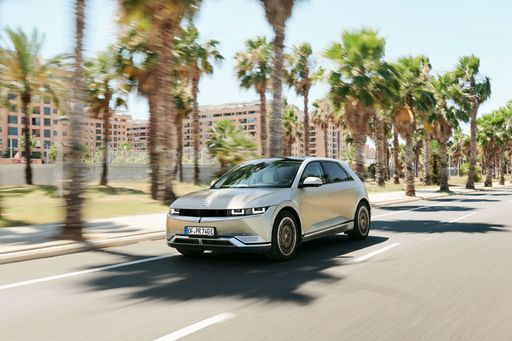
Hyundai IONIQ 5
Hyundai IONIQ 5
The Hyundai IONIQ 5 showcases a bold and futuristic design that captures attention with its striking facade and sharp lines. This electric vehicle offers an impressive blend of performance and efficiency, making it a compelling choice for environmentally conscious drivers. Inside, the spacious and tech-forward interior provides a comfortable and engaging driving experience for both driver and passengers.
details @ hyundai.news
@ hyundai.news
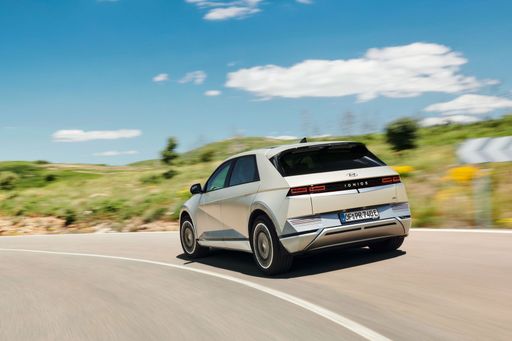 @ hyundai.news
@ hyundai.news
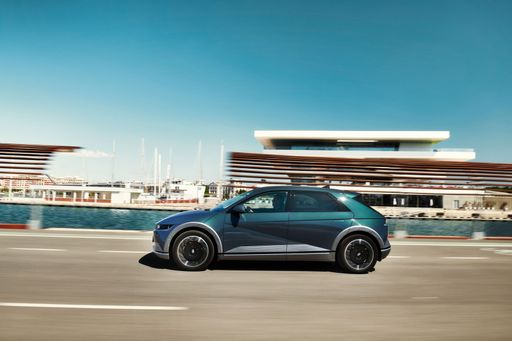 @ hyundai.news
@ hyundai.news
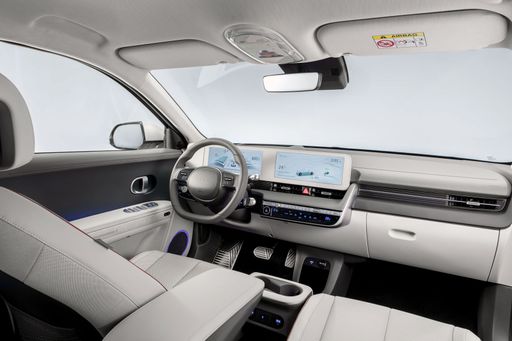 @ hyundai.news
@ hyundai.news
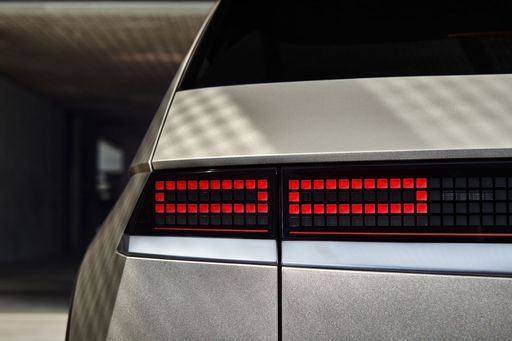 @ hyundai.news
@ hyundai.news
MG Cyberster
The Cyberster is a striking new addition to the electric vehicle landscape, captivating enthusiasts with its sleek design and sporty silhouette. This all-electric convertible combines innovative technology with an exhilarating driving experience, making it a standout choice for those who crave adventure. With its commitment to sustainability and performance, the Cyberster is poised to redefine the way we think about modern roadsters.
details

|
|
|
|
|
Costs and Consumption |
|
|---|---|
|
Price
38500 - 64200 £
|
Price
55700 - 60000 £
|
|
Consumption L/100km
-
|
Consumption L/100km
-
|
|
Consumption kWh/100km
15.6 - 21.2 kWh
|
Consumption kWh/100km
16.7 - 19.1 kWh
|
|
Electric Range
440 - 570 km
|
Electric Range
443 - 507 km
|
|
Battery Capacity
63 - 84 kWh
|
Battery Capacity
74.40 kWh
|
|
co2
0 g/km
|
co2
0 g/km
|
|
Fuel tank capacity
-
|
Fuel tank capacity
-
|
Dimensions and Body |
|
|---|---|
|
Body Type
SUV
|
Body Type
Roadster
|
|
Seats
5
|
Seats
2
|
|
Doors
5
|
Doors
2
|
|
Curb weight
1955 - 2275 kg
|
Curb weight
1960 - 2060 kg
|
|
Trunk capacity
480 - 520 L
|
Trunk capacity
200 L
|
|
Length
4655 - 4715 mm
|
Length
4535 mm
|
|
Width
1890 - 1940 mm
|
Width
1913 mm
|
|
Height
1585 - 1605 mm
|
Height
1329 mm
|
|
Max trunk capacity
1540 - 1580 L
|
Max trunk capacity
-
|
|
Payload
385 - 530 kg
|
Payload
150 kg
|
Engine and Performance |
|
|---|---|
|
Engine Type
Electric
|
Engine Type
Electric
|
|
Transmission
Automatic
|
Transmission
Automatic
|
|
Transmission Detail
Reduction Gearbox
|
Transmission Detail
Reduction Gearbox
|
|
Drive Type
Rear-Wheel Drive, All-Wheel Drive
|
Drive Type
Rear-Wheel Drive, All-Wheel Drive
|
|
Power HP
170 - 650 HP
|
Power HP
340 - 510 HP
|
|
Acceleration 0-100km/h
3.5 - 8.5 s
|
Acceleration 0-100km/h
3.2 - 5.2 s
|
|
Max Speed
185 - 260 km/h
|
Max Speed
195 - 200 km/h
|
|
Torque
350 - 770 Nm
|
Torque
475 - 725 Nm
|
|
Number of Cylinders
-
|
Number of Cylinders
-
|
|
Power kW
125 - 478 kW
|
Power kW
250 - 375 kW
|
|
Engine capacity
-
|
Engine capacity
-
|
General |
|
|---|---|
|
Model Year
2024
|
Model Year
2025
|
|
CO2 Efficiency Class
A
|
CO2 Efficiency Class
A
|
|
Brand
Hyundai
|
Brand
MG
|
What drive types are available for the Hyundai IONIQ 5?
The Hyundai IONIQ 5 is available as Rear-Wheel Drive or All-Wheel Drive.
The prices and data displayed are estimates based on German list prices and may vary by country. This information is not legally binding.
